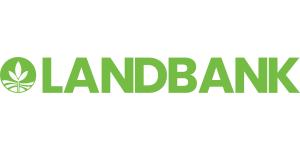Products
Description
Land Bank of the Philippines, or LandBank, is a specialized government bank that services farmers and fishermen. It operates with a universal banking license but is not formally a universal bank. It is the second-largest bank in the country, just behind BDO Unibank. Its assets amount to ₱3,409,226 million. LandBank has a robust network of branches and offices in rural areas and is especially focused on servicing clients with little to no access to banking services in rural communities. Their rural network has over 409 branches and offices and 46 lending centers.
Products of Land Bank
LandBank is focused on saving products, though they also offer a few others. The list of products includes:
-
Savings: the main account in LandBank is a savings account, and they have a few different types you can open including an Easy Savings one, and a High-Yield one. Their offer also includes time deposits, a pension account, and accounts in dollars and euros.
-
Loans: unlike a commercial bank, LandBank’s loans are all meant to aid rural development. They offer loans for farmers and fishers, construction and housing, green energy projects, businesses, and local government units. They also have programs for Filipinos overseas, women in business, and students.
-
Cards: they offer credit cards and Visa debit cards, as well as electronic and prepaid cards.
-
Investment: they offer investments in government and corporate securities and funds like the money market, fixed income, multi-asset, and equity. Another offer is trust funds, such as personal management, living insurance, and personal retirement trusts.
-
Remittance: they have a network of overseas partners in 20 countries and over 5,000 locations for cash pick-up that allow Filipinos overseas to send remittances to family members in the Philippines.
As a government bank, LandBank also has a variety of Corporate Social Responsibility programs, such as scholarships and training programs for farmer families.
History of Land Bank
LandBank was created in 1963 with the Agricultural Land Reform Code. The bank was meant to assist with purchasing land and reselling it to small landholders. At the time, it was exempt from taxes and from having to pay dividends to the government. In 1972 the Tenant Emancipation Act was passed and with it, the ownership of private lands used to grow rice and corn was passed to the tenant farmers. LandBank was tasked to collect 15-year amortization for that land with 6% annual interest.
In 1973, the bank was facing financial difficulties and lacked in organizational structure, so it had to be revitalized via a Presidential Decree. That year, it was also granted a universal license. In 1982 LandBank absorbed the assets and functions of the Agricultural Credit Administration, an organization established with the same Reform Code. In 1988, it also became an intermediary for the Comprehensive Agrarian Reform Program.
In 2014, there were plans to merge it with the Development Bank of the Philippines, but the merger was halted in 2016 and officially canceled in 2024. In 2021, another merger was executed, this time with the United Coconut Planters Bank.
